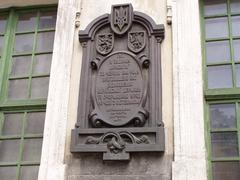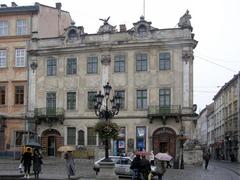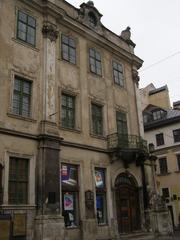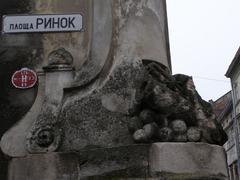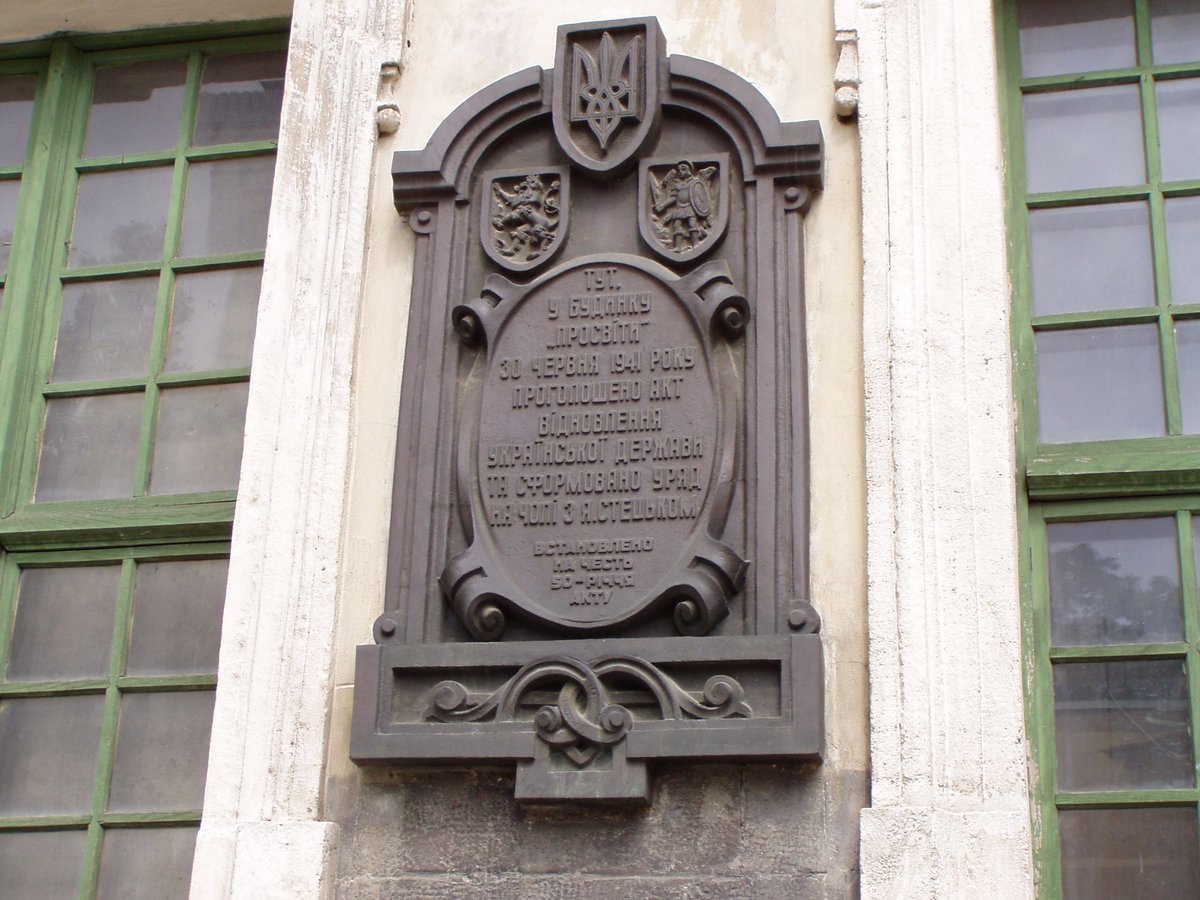
Lubomirski Palace Lviv Ukraine: Visiting Hours, Tickets, and Historical Sites Guide
Date: 14/06/2025
Introduction
Lubomirski Palace, situated at 10 Rynok Square in Lviv, Ukraine, is a stellar representation of the city’s architectural grandeur and complex history. This 18th-century palace is a fusion of Rococo and Baroque styles, designed primarily by Jan de Witte in 1763. Over the centuries, Lubomirski Palace has evolved from a noble residence to a center of imperial power, a hub for Ukrainian national awakening, and a modern cultural institution. Its ornate facades, symbolic eagle motif, and decorative flourishes make it one of Lviv’s architectural jewels (IGotoWorld; Discover Ukraine; Tripomatic).
The palace has played a pivotal role in Lviv’s political and cultural life, serving as the residence of Austrian governors after the First Partition of Poland and later as headquarters for the Ukrainian cultural society Prosvita. It was also the site of the 1941 proclamation of Ukrainian independence by Yaroslav Stetsko (Evendo; Tripomatic).
Today, Lubomirski Palace hosts the Museum of Ethnography and Crafts, featuring rare European decorative arts. Its prime location on Lviv’s UNESCO-listed Rynok Square makes it a must-visit for anyone interested in the city’s layered history. This guide offers comprehensive details on visiting hours, tickets, accessibility, nearby attractions, and travel tips for exploring this remarkable site (IGotoWorld; Discover Ukraine).
Historical and Architectural Overview
Origins and Early Development
The current palace stands on a site that originally featured Gothic buildings, notably a kam’ianytsia (stone townhouse) owned by Prince John Sapieha. In 1760, Prince Stanisław Lubomirski acquired these and commissioned Jan de Witte to create a unified palace, completed in 1763 (IGotoWorld; Tripomatic). The design reflects the Lubomirski family’s aspirations and the cosmopolitan character of 18th-century Lviv.
Architectural Evolution and Features
Lubomirski Palace exemplifies Rococo and Baroque styles, with its facades facing Rynok Square, Rus’ka Street, and Fedorova Street. Highlights include pilasters, cornices, intricate window decorations, and the attic’s eagle sculpture—a nod to the Lubomirski crest. Elements of military paraphernalia pay tribute to both the family’s martial background and de Witte’s career (IGotoWorld).
Inside, the palace retains period fireplaces, high ceilings, and elegant staircases. The Gothic roots are visible in the basements and original masonry, particularly on Fedorova Street, where a 1695 cartouche marks the oldest surviving elements.
Political and Cultural Significance
After the First Partition of Poland, Lubomirski Palace became the residence of the Austrian governor of Galicia, marking its transformation from a private residence to a seat of imperial administration (IGotoWorld). In the 19th century, it turned into a cultural center with Prosvita promoting Ukrainian identity. During WWII, it became a stage for the 1941 declaration of Ukrainian independence (Tripomatic).
In the 20th century, the palace housed the Museum of Ethnography and Crafts, displaying furniture, porcelain, and Ukrainian art from the 16th to the early 20th centuries (IGotoWorld). Restoration efforts have preserved its Rococo facades, Gothic basements, and historic interiors.
Place in Lviv’s Urban and Cultural Landscape
Lubomirski Palace is integral to the architectural and cultural fabric of Rynok Square, a UNESCO World Heritage Site. Surrounding landmarks include Korniakt Palace, the Dormition Church, and the Pharmacy Museum, all testifying to Lviv’s role as a crossroads of cultures and empires (Mapcarta). The palace’s successive functions mirror the city’s multifaceted history.
Visitor Information
Opening Hours
- Tuesday to Sunday: 10:00 AM – 6:00 PM
- Closed: Mondays and major public holidays
(Always check the official museum website or local tourism resources for updates.)
Tickets and Admission
- General admission: 30–50 UAH for adults (varies by exhibition or event)
- Discounts: Available for students, seniors, and groups
- Children: Free entry for those under a certain age
- Purchase: On-site or online in advance
Guided Tours & Accessibility
- Guided tours: Available in multiple languages; advance booking recommended
- Accessibility: The building is partially accessible; some historic areas have limited access. Contact the museum for details if you have mobility challenges.
Travel Tips
- Visit early to avoid crowds, especially in peak season
- Wear comfortable shoes (historic floors can be uneven)
- Photography is allowed in most areas, but check exhibition hall policies
Nearby Attractions
Lubomirski Palace’s central location allows for easy exploration of:
- Korniakt Palace: Renaissance and Baroque architecture
- Dormition Church: Eastern Orthodox artistry
- Pharmacy Museum: One of Europe’s oldest pharmacies
- Latin Cathedral: Stained glass and Baroque altarpiece
- Lviv City Hall: Panoramic views from the tower
- Bandinelli House & Black House: Architectural landmarks
Walking tours often include the palace as a highlight (Free Walking Tour).
How to Get There
- On Foot: 10 Rynok Square is easily reached from most central Lviv locations.
- Tram: Lines 1 or 9 to ‘Rynok Square’.
- Bus: Line 24 from Central Market.
- Taxi/Rideshare: Request ‘Rynok Square, 10’.
The area is pedestrian-friendly but features cobblestone streets.
Frequently Asked Questions (FAQ)
Q: What are Lubomirski Palace’s visiting hours?
A: Tuesday to Sunday, 10:00 AM – 6:00 PM; closed Mondays.
Q: How much is admission?
A: 30–50 UAH for adults, with discounts available.
Q: Are guided tours offered?
A: Yes, in several languages. Book in advance for the best experience.
Q: Is the palace wheelchair accessible?
A: Partially; some areas are challenging due to historic design.
Q: Can I take photos inside?
A: Usually yes, but check for restrictions in exhibition halls.
Practical Visiting Tips
- Photography: The best light is early morning or late afternoon.
- Events: Watch for special exhibitions or concerts.
- Dining: Numerous cafes and restaurants in Rynok Square.
- Language: English is commonly spoken in tourist zones.
Visuals and Media
High-quality images and interactive maps are available via tourism and museum websites. When sharing images, use descriptive alt tags such as “Lubomirski Palace Lviv facade” or “Baroque architecture in Lviv”.
Summary and Final Tips
Lubomirski Palace embodies Lviv’s layered history, architectural splendor, and vibrant cultural life. From its origins as a noble residence to its role as a center of governance, national revival, and culture, the palace tells a compelling story of Western Ukraine (IGotoWorld; Discover Ukraine; Tripomatic). Its location on Rynok Square places visitors at the heart of Lviv’s UNESCO-listed old town, with easy access to major landmarks.
For the most enriching experience, combine your visit with a guided tour and explore the diverse architecture and history of Rynok Square. Use digital resources like the Audiala app for audio guides, and stay up to date on exhibitions and events by following local tourism sites and social media. Lubomirski Palace is a must-see for anyone exploring the history and culture of Lviv.
